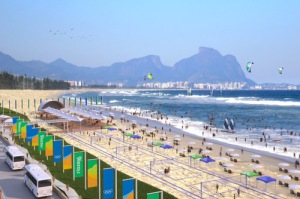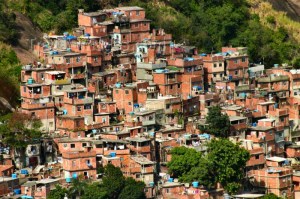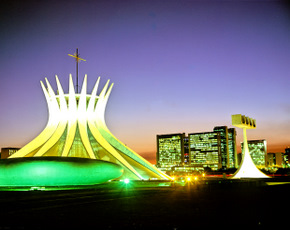Whoever visits Rio soon finds out that his/her agenda is always full – that is the pride of the local population. There is never a lack of exciting activities— from exhibitions, theater plays, dance and music shows to sports events for all tastes. But the Wonderful City has yet a wide range of other attractions to offer, such as cultural centers, churches, famous confectioners’, old streetcars and numberless museums. On your visit, be sure to set aside time to learn about the culture and the history of Rio de Janeiro and Brazil by utilizing one of Rio’s most important resources—museums. These institutions range in subject from all sorts of modern and indigenous art to natural history and political history. Here are a few of our favorites:
The Modern Art Museum
Inaugurated in 1958, the Modern Art Museum (MAM) is located in a privileged area and has a great history to tell. It hosts a collection of four thousand works. It exhibits the Gilberto Chateaubriand collection – with paintings by Anita Malfatti, Tarsila do Amaral, Lasar Segall, Di Cavalcanti and Portinari. Its gardens were designed by Burle Marx and were restored in 2004. It offers also an art cinema, a library and a bookstore. It is located on Avenida D. Henrique, at Flamengo Park. It opens from Tuesday to Sunday: during the week, from noon to 5:30 pm; on Saturdays and Sundays, from noon to 7 pm. Information: +55 (21) 2240-4944.
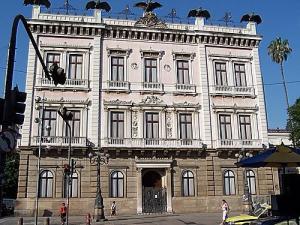
Museu da Republica
National Historical Museum
The architectonic complex became a museum in 1922, during the Presidency of Epitácio Pessoa, and hosts a priceless collection with 275 thousand pieces, including paintings, guns, royal carts, furniture and rare objects – such as the plumed pen used by Princess Isabel to sign the Áurea Law, which abolished slavery in Brazil. The Museum is located on a 18 thousand m² land and occupies three separate buildings erected at different times: the Train House, from 1762; the Royal Arsenal, from 1822; and the Annexed Building for military quarters, from 1835. It is located on Praça Mal. Âncora, Downtown. It is open to visitors from Tuesday to Friday, from 10 am to 5 pm, and on Saturdays and Sundays, from 2 pm to 6 pm. On Sundays, the entrance is free. For more information: +55 (21) 2550-9224.
International Museum of Naïf Art
Naïf art – “naïf” means “naive”, in French – is made by self-learnt artists, without much technical skills, The museum hosts the works of 520 national and foreign artists with the predominance of live, strong colors and irregular, abstract traces. It is considered as one of the largest collections in its genre in the world. It is located on Rua Cosme Velho, 561, at Cosme Velho. It opens from Tuesday to Friday, from 10 am to 6 pm, and on Saturdays, Sundays and holidays, from noon to 6 pm. Information: +55 (21) 2205-8612.
The National Museum of Beaux Arts
It hosts rarities from Brazilian artists such as Victor Meirelles, Rodolfo Amoedo, Pedro Américo, Almeida Jr. and Eliseu Vasconcelos – works that comprise the largest collection of Brazilian art from the 19th century. This institution also keeps a much-prized collection of foreign paintings, including Italian baroque paintings, landscapes by Dutch painter Frans Post and paintings by French Eugène Boudin. Rooms are divided by themes and there are always excellent temporary exhibitions. It is located on Avenida Rio Branco, 199. It opens from Tuesday to Friday, from 10 am to 6 pm, and on Saturdays and Sundays, from 2 pm to 6 pm. For ticket prices and other information: +55 (21) 2240-0068.
The Catete Palace – the Republic Museum
It hosts the Republic Museum and what used to be the headquarters of the Brazilian Republican government 1897 and 1960, the Catete Palace; with a neoclassic architecture, with granite and rose marble façade and white-marble engraved portals. 18 Brazilian Presidents lived and worked there and it witnessed some of the most events in the Country’s history – such the Brazilian decision to enter both Great World Wars and the dramatic suicide of President Getúlio Vargas. Turned into a museum after the Capital Federal moved to Brasilia, the museum offers an intense cultural agenda and offers also a bookstore, a bar, a restaurant, a souvenirs store and a beautiful garden. Located on Rua do Catete, 153, at Catete, the Museum opens from Tuesday to Friday, from noon to 5 pm, and on Saturdays, Sundays and holidays, from 2 pm to 6 pm. Information: +55 (21) 2558-6350.
For accommodations in Rio, visit RentinRio.com
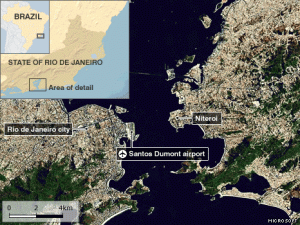 At least 170 people died after a week of heavy rain prompted mudslides and floods in Rio de Janeiro state. More than 50 houses were engulfed as mud and rubble poured into the Morro do Bumba favela near Rio de Janeiro. The shantytown was built on top of a disused landfill which makes it prone to landslides.
At least 170 people died after a week of heavy rain prompted mudslides and floods in Rio de Janeiro state. More than 50 houses were engulfed as mud and rubble poured into the Morro do Bumba favela near Rio de Janeiro. The shantytown was built on top of a disused landfill which makes it prone to landslides.
